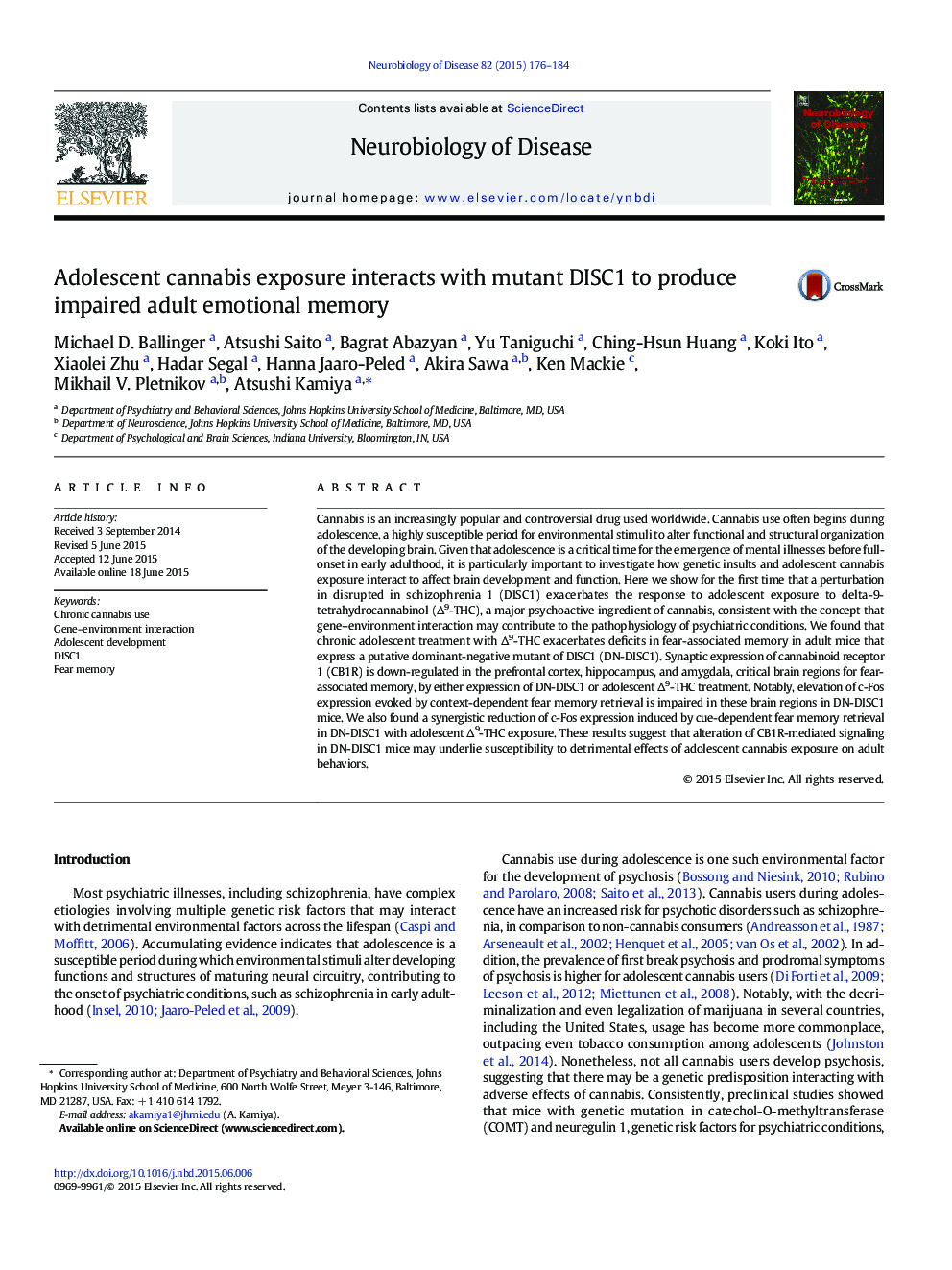| Article ID | Journal | Published Year | Pages | File Type |
|---|---|---|---|---|
| 6021607 | Neurobiology of Disease | 2015 | 9 Pages |
Abstract
Cannabis is an increasingly popular and controversial drug used worldwide. Cannabis use often begins during adolescence, a highly susceptible period for environmental stimuli to alter functional and structural organization of the developing brain. Given that adolescence is a critical time for the emergence of mental illnesses before full-onset in early adulthood, it is particularly important to investigate how genetic insults and adolescent cannabis exposure interact to affect brain development and function. Here we show for the first time that a perturbation in disrupted in schizophrenia 1 (DISC1) exacerbates the response to adolescent exposure to delta-9-tetrahydrocannabinol (Î9-THC), a major psychoactive ingredient of cannabis, consistent with the concept that gene-environment interaction may contribute to the pathophysiology of psychiatric conditions. We found that chronic adolescent treatment with Î9-THC exacerbates deficits in fear-associated memory in adult mice that express a putative dominant-negative mutant of DISC1 (DN-DISC1). Synaptic expression of cannabinoid receptor 1 (CB1R) is down-regulated in the prefrontal cortex, hippocampus, and amygdala, critical brain regions for fear-associated memory, by either expression of DN-DISC1 or adolescent Î9-THC treatment. Notably, elevation of c-Fos expression evoked by context-dependent fear memory retrieval is impaired in these brain regions in DN-DISC1 mice. We also found a synergistic reduction of c-Fos expression induced by cue-dependent fear memory retrieval in DN-DISC1 with adolescent Î9-THC exposure. These results suggest that alteration of CB1R-mediated signaling in DN-DISC1 mice may underlie susceptibility to detrimental effects of adolescent cannabis exposure on adult behaviors.
Related Topics
Life Sciences
Neuroscience
Neurology
Authors
Michael D. Ballinger, Atsushi Saito, Bagrat Abazyan, Yu Taniguchi, Ching-Hsun Huang, Koki Ito, Xiaolei Zhu, Hadar Segal, Hanna Jaaro-Peled, Akira Sawa, Ken Mackie, Mikhail V. Pletnikov, Atsushi Kamiya,
